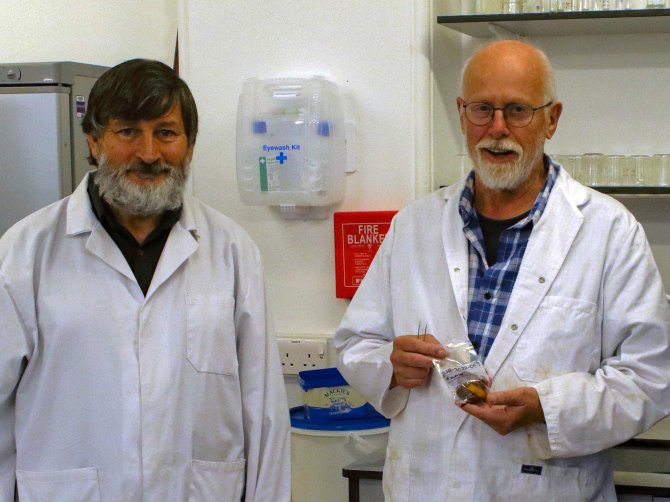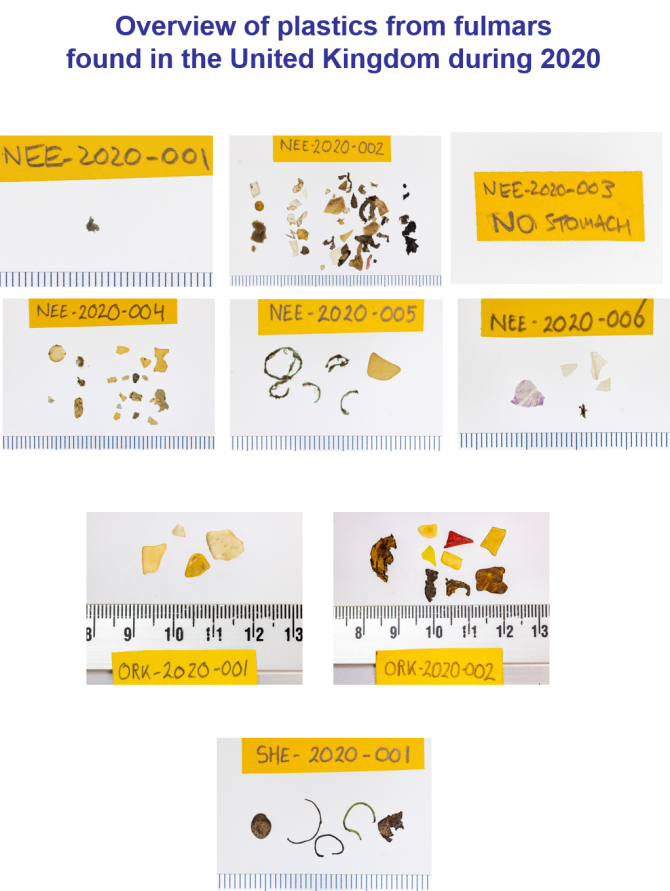
News
New data available on plastic in fulmars from the United Kingdom
Wageningen Marine Research recently published the annual report on plastics in fulmars from the UK for the year 2020. Although still far above the policy target, the amount of plastics in fulmars continues to decrease.
Results up to the year 2020
According to the OSPAR Ecological Quality Objective and the UK Marine Strategy not more than 10% of the fulmars from the UK coast should have 0.1 gram or more plastic in their stomach. Within the last five years (2016-2020) 98 fulmars were analysed and 45% of them exceeded this threshold. Nevertheless the trend in plastic mass is decreasing. In the 10-year period 2011-2020 the total plastic mass even decreased significantly, while for the total program period (2002-2020) this change is less obvious and therefore not significant. Within the UK regions the trends are variable and do not show a clear pattern. A reason for such picture remains unclear.

These results are in line with the findings in the Netherlands from the same period. In Dutch fulmars the number of birds exceeding the threshold of 0.1 gram plastic had increased during the latest 5-year period, however, in the Netherlands the long-term trends over the last 10 years and the entire study period were still decreasing significantly.
These results have now been reported to DEFRA, who has commissioned the work on UK fulmars to Wageningen Marine Research. A summarizing report of the results is now publicly available.
Individual fulmar plastic loads
To inform all volunteers, a finders report has been published as well. In this informal report, details on each individual fulmar are given, accompanied by pictures of the plastic content per bird. Each volunteer that had found a fulmar can see the plastic load of her or his own fulmars. With this, the scientists want to thank the volunteers for their efforts and hope to stimulate the collection of dead fulmars in the future. This report can be downloaded.
